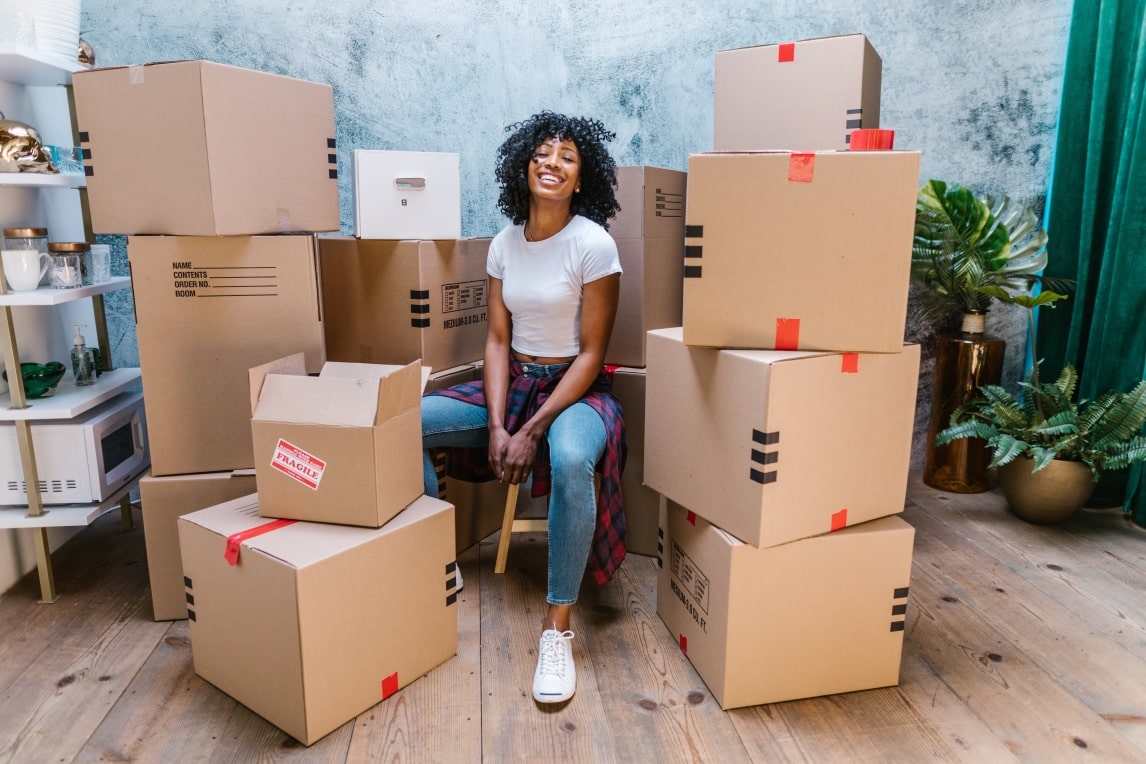For many people, cardboard boxes are synonymous with moving. After all, they are easy to find, come in all shapes and sizes, and recyclable. Still, there are plenty of disadvantages with cardboard as you have likely experienced just with online ordering. Low-quality cardboard boxes can easily rip and fall apart. They also cannot stand up to moisture, which can be an issue when moving in New Jersey as rain or snow can lead to a soggy, unstable cardboard mess. And while there are plenty of size options, it can be difficult to find the right size at a reasonable price.
Luckily, you don’t have to exclusively use cardboard boxes for your NJ move. There are plenty of other options you can use that will save you money and even make the packing and unpacking process easier.
Suitcases
If you have done any amount of traveling, your suitcase is a perfect option for a move. These are made to be durable since they’re expected to be knocked around. While you might not be able to fit a lot in your suitcase, it’s a great place for packing your necessities like clothes, important documents, a toothbrush, medication, etc. Essentially, use your suitcase like you would if you were traveling for 2-3 days. That way, you won’t have to tear through all your boxes to find what you need.
Plastic Bins
These are the perfect replacement for cardboard boxes as they can withstand moisture and fluctuating temperatures. That makes it perfect not only for moving, but storage as well. It’s especially good for items you don’t want to get wet like books and electronics.
Don’t overpack these with heavy items as it could lead to the bin cracking or, worst case scenario, breaking. You should also make sure the top is secured either by whatever locking mechanism it has or closed either with plastic wrap or tape. The last thing you want is for the lid to fly off during transit!
Many NJ movers offer plastic bin rentals. These bins are very sturdy and dust and weather-proof. The locking mechanism of the doors is such that it won’t accidentally pop off during the move. And the best part is that since it’s a rental you won’t have to worry about where to put these boxes after you’re done unpacking. The movers will pick it up after you’re done.
Plastic Crates
While plastic crates might be similar to plastic bins, the difference is that crates cannot be sealed. Besides that, it has all the benefits of plastic bins and many movers even rent them out. Crates are built for durability so they’re great to use for bulky, heavy items or oddly shaped items you can’t pack and carry in plastic bins.
Hampers
If you’re going the DIY route, consider throwing some stuff into your clothes hamper. It’s the perfect place for your linens, towels, bedsheets, etc. Don’t throw anything fragile in there, though! Using a hamper only works for a DIY move as most professional movers require all items to be properly boxed or, at the very least, have a secure lid as they want to ensure your items are protected and arrive safe and sound to your new home. With that said, ask your NJ movers what their policy is as some companies require everything in boxes or secure containers while others do not.
Moving Bags
These aren’t super common, but if you happen to find any or if the movers have it available for rental, it’s a great option. These moving bags tend to be made out of plastic so it has many of the main benefits of a plastic bin (waterproof and durable) with the added benefit of being flexible and easy to store. Since it’s a bag, you can easily fold it up and stash it in your closet for future use. And the soft material also means you have a bit more flexibility when it comes to packing it since it will expand a bit. Just don’t overstuff it as it could lead to rips and/or damaging the zipper.
What Not to Use
There’s a lot of things you can use as an alternative to cardboard, but the number one thing you should not use are garbage bags or plastic bags of any kind. No matter how sturdy a plastic bag is, they are prone to tears and rips during transit. All it takes is for the bag to snag on a sharp corner for your contents to spill in the truck or on your new driveway. Plus, most professional movers will not put stuffed plastic bags onto their truck. Instead, they will ask you to repack the item or pack it themselves, which will end up costing you more money.
Besides plastic bags, you should also avoid anything that does not have a secure closing mechanism as much as possible. While you can always tape or wrap these containers shut, there’s always the chance that the plastic wrap will shift or the tape will fail. One exception would be your dresser. Instead of packing all the clothes into boxes or containers, a lot of movers are okay with you wrapping the drawers shut with plastic wrap. Just make sure you use multiple layers and tape the wrap down securely.
Get Packing!
Nowadays there are plenty of options available at your disposal that aren’t cardboard boxes. Of course, the trusty box still has its place. Nowadays, moving boxes are more durable and there are a wider variety of options to handle specialty items like artwork, glass and plateware, hanging clothes, and more! So don’t write off boxes completely. Instead, use them along with the other suggestions listed above.

